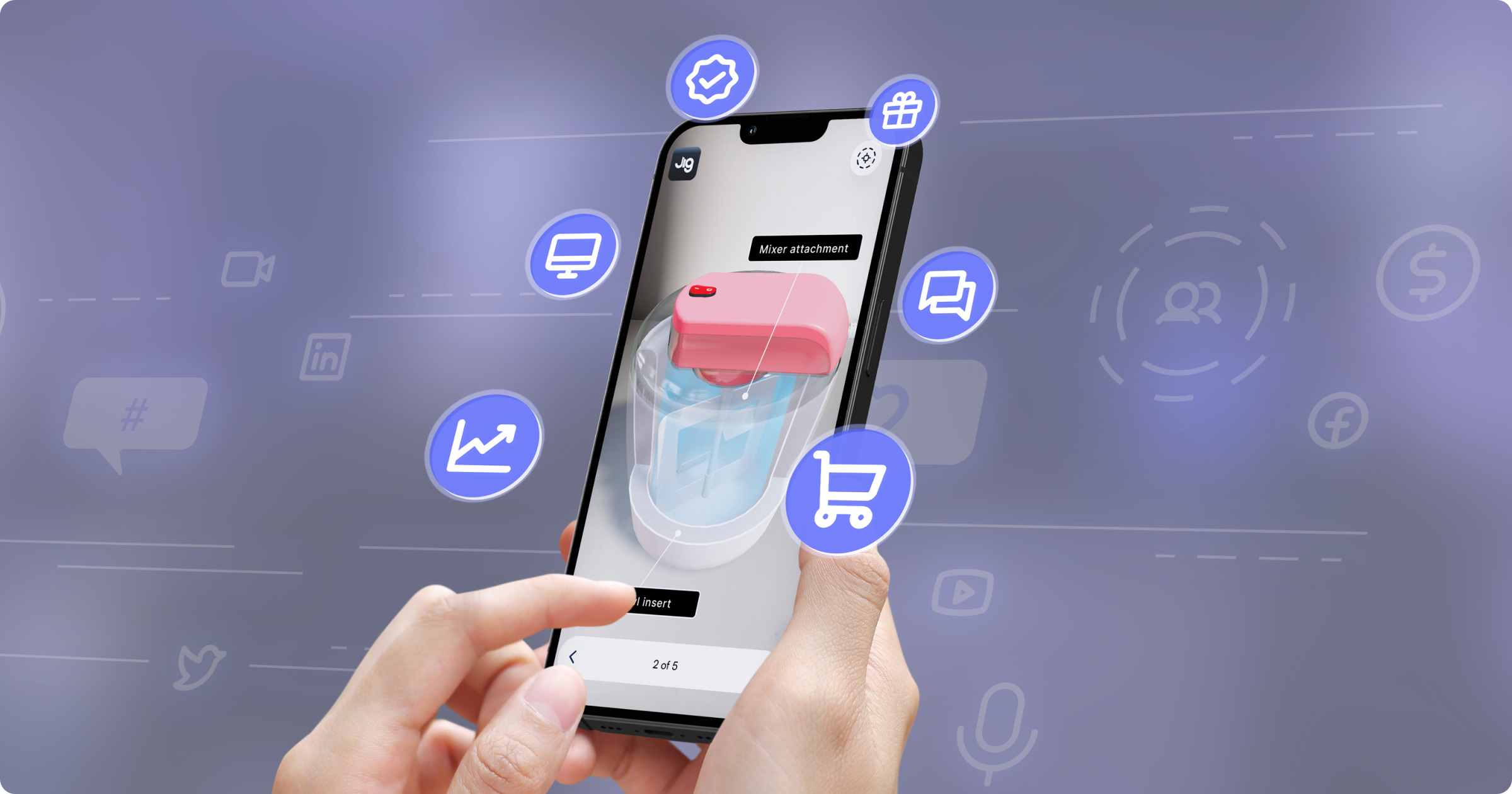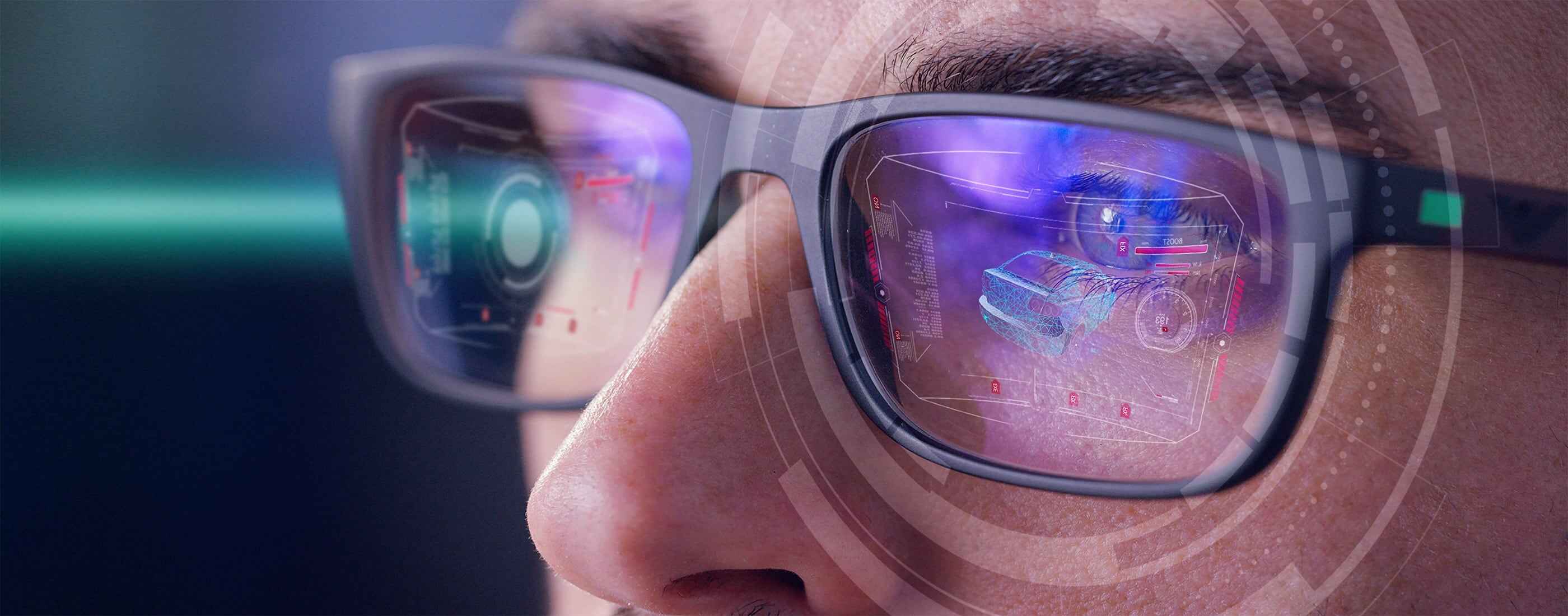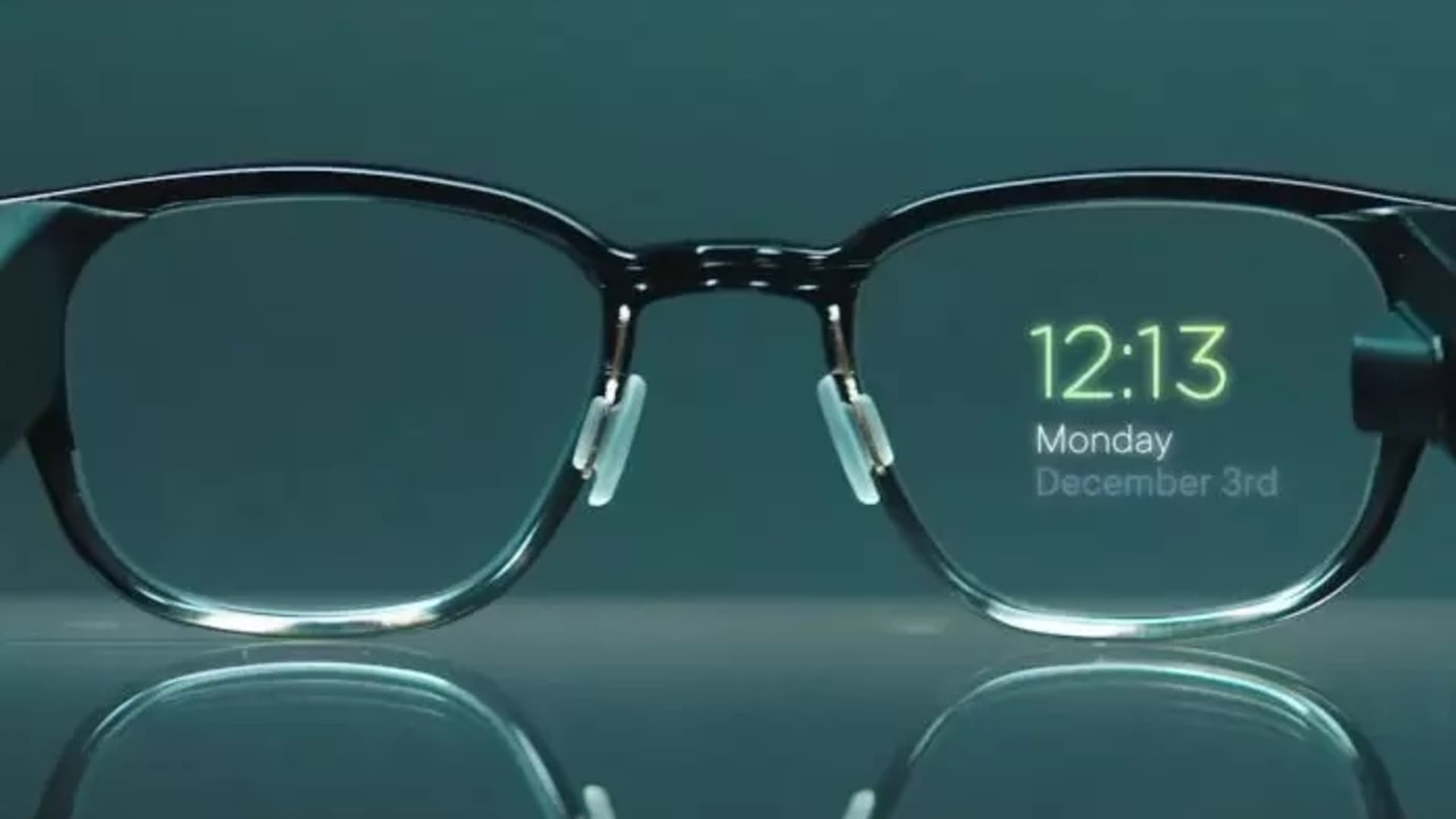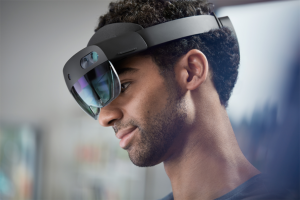Introduction
Wearable technology has witnessed a significant rise in popularity over the past decade, with smart glasses leading the way as one of the most sought-after devices. These futuristic wearable gadgets offer a wide range of features and functionalities that integrate seamlessly into our daily lives. From augmented reality interactions to hands-free access to information, smart glasses have the potential to revolutionize how we perceive and interact with the world.
However, along with their many benefits, smart glasses also present a host of challenges that need to be addressed for widespread adoption. In this article, we will explore the biggest hurdles that wearable technology devices like smart glasses face and how they affect their usability and acceptance.
From privacy concerns and data security to user experience and design, each challenge highlighted in this article adds layers of complexity to the development and acceptance of smart glasses. Understanding and overcoming these obstacles is crucial for the future success of wearable technology, as it will pave the way for more efficient, user-friendly, and socially acceptable smart glasses.
Let us now delve into each challenge in more detail, discussing the implications and potential solutions that can help shape the future of smart glasses and wearable technology as a whole.
Privacy Concerns and Data Security
One of the major challenges facing wearable technology devices like smart glasses is the issue of privacy and data security. With the ability to capture and record audio, video, and location data, smart glasses raise concerns about the potential misuse of personal information.
Users may worry about their privacy being compromised, especially in public spaces where others may be recorded without their consent. Additionally, the data collected by these devices can be attractive to hackers, increasing the risk of unauthorized access and potential data breaches.
To address these concerns, manufacturers and developers must prioritize robust security measures to protect user data. This includes stringent encryption protocols, secure cloud storage options, and transparent privacy policies that clearly outline how user data is collected, used, and stored. Implementing strict access controls and user consent mechanisms can also help users have better control over the data shared by their smart glasses.
Another aspect to consider is anonymizing data where possible. By stripping personal identifiers from collected information, it becomes more challenging to link data back to specific individuals, reducing the risk of identity theft and discrimination based on data analysis.
Educating users about the potential risks and best practices for protecting their privacy can also go a long way in mitigating concerns. By providing clear guidelines on responsible usage, manufacturers can empower users to make informed decisions about when and where to use their smart glasses to respect the privacy of others.
Industry collaboration is also crucial in addressing privacy and security challenges. Sharing best practices, conducting independent audits, and establishing industry-wide standards can help build trust among consumers and ensure that wearable technology devices like smart glasses are developed with privacy and security in mind.
User Experience and Design
While the potential of smart glasses is immense, delivering a seamless and intuitive user experience remains a significant challenge. User experience (UX) encompasses the overall design, functionality, and usability of the device, and affects how users interact and engage with smart glasses.
One of the primary concerns is the size and weight of smart glasses. Bulky and uncomfortable designs can deter users from adopting these devices for extended periods. Manufacturers must prioritize lightweight and ergonomic designs that prioritize user comfort. This includes using lightweight materials, optimizing weight distribution, and ensuring a secure fit for different head sizes and shapes.
The interface and controls of smart glasses also play a crucial role in enhancing the user experience. The device’s navigation and interaction mechanisms should be intuitive, allowing users to access information and perform tasks effortlessly. Voice commands, gesture recognition, and tactile inputs can all contribute to a more natural and immersive user experience.
Furthermore, smart glasses should offer customizable display options to cater to users’ preferences and needs. Adjustable brightness levels, font sizes, and color schemes can enhance readability and reduce eye strain. Consideration should also be given to people with visual impairments, ensuring accessibility features are incorporated into the design.
In addition to physical design, the software interface and applications available for smart glasses should be optimized for usability and functionality. Developers should focus on creating user-friendly and intuitive interfaces that minimize cognitive load. Considerations should also be made to streamline app selection and installation, making it easy for users to find and install relevant apps without overwhelming them with an extensive catalog.
Ultimately, achieving a seamless user experience and intuitive design requires extensive user testing and feedback. Collecting insights from real-world users can highlight pain points and areas of improvement, leading to iterative design processes and continuous refinement.
By prioritizing user experience and design, manufacturers can ensure that smart glasses provide an enjoyable and user-friendly interaction that encourages widespread adoption and usage.
Battery Life and Power Consumption
Battery life and power consumption present a significant challenge for wearable technology devices like smart glasses. Constantly evolving technology and increasing demands for advanced features can strain the limited power capacity of these compact devices.
One of the key considerations in improving battery life is optimizing power management. This involves developing efficient power management systems that prioritize power allocation to critical functions while minimizing energy consumption during idle periods. Implementing power-saving modes and intelligent sleep/wake functionalities can help extend the battery life of smart glasses.
Another approach is to explore alternative power sources or energy harvesting techniques. Integrating solar cells or kinetic energy harvesting mechanisms into the design of smart glasses can help replenish the battery and reduce reliance on external charging. While these technologies are still in their early stages, advancements in this area hold great potential for improving the battery life of smart glasses.
Additionally, manufacturers should focus on developing power-efficient hardware components. Advances in chip design and microprocessors can help reduce power consumption without compromising performance. Opting for low-power display technologies and energy-efficient sensors can also contribute to extending battery life.
Exploring innovative charging solutions can further alleviate battery life concerns. Wireless charging technology, for example, allows users to conveniently charge their smart glasses without the need for physical connectors. Integrating wireless charging capabilities into smart glasses can simplify the charging process and enhance user convenience.
Last but not least, educating users about power-saving strategies and best practices can help them maximize the battery life of their smart glasses. Suggesting actions such as adjusting screen brightness, minimizing background app activity, and disabling unnecessary features when not in use can all contribute to optimizing battery performance.
Addressing battery life and power consumption challenges requires a combination of hardware and software optimizations, as well as user education and awareness. By focusing on these areas, manufacturers can provide users with a more seamless and uninterrupted experience, ensuring that smart glasses remain functional for extended periods of use.
Cost and Affordability
Cost and affordability are significant barriers that hinder the widespread adoption of wearable technology devices like smart glasses. Currently, these devices tend to be relatively expensive, making them out of reach for many potential consumers.
The cost of smart glasses is influenced by several factors, including the complexity of technology, production volume, and brand reputation. Advanced features such as high-resolution displays, built-in cameras, and advanced sensors contribute to higher manufacturing costs, which are ultimately passed on to the consumer. As a result, these devices are often priced at a premium.
To address this challenge, manufacturers need to focus on reducing production costs and optimizing supply chains. Streamlining manufacturing processes, negotiating favorable component deals, and increasing production volumes can help decrease the overall cost of smart glasses. Collaboration with industry partners and leveraging economies of scale can also contribute to lowering prices.
Another approach is to offer different tiers of smart glasses, catering to different budget ranges. By providing more affordable entry-level options, manufacturers can make smart glasses accessible to a wider audience. These budget-friendly versions may have fewer advanced features but still offer the core functionalities that users seek.
Furthermore, exploring alternative business models, such as subscription-based plans or leasing options, could help overcome the upfront cost barrier. Instead of purchasing the device upfront, users could opt for monthly or annual payment plans, allowing them to use the device at a more affordable cost.
Government subsidies or incentives can also play a role in making smart glasses more affordable. Encouraging policies that support the adoption of wearable technology devices, such as tax breaks or subsidies for low-income individuals, can help reduce the financial burden and promote wider adoption.
Lastly, educating consumers about the long-term value and benefits of smart glasses can help justify the cost. By highlighting the potential productivity gains, health benefits, and improved quality of life that smart glasses can offer, manufacturers can sway consumers to consider investing in these devices.
Ultimately, addressing the cost and affordability challenge is crucial to ensure that smart glasses become accessible to a broader demographic. By focusing on cost optimization, offering budget-friendly options, and exploring alternative business models, manufacturers can make smart glasses a more affordable and attractive proposition for consumers.
Limited Functionality and Dependencies
One of the challenges facing wearable technology devices like smart glasses is their limited functionality and dependence on other devices or platforms. While smart glasses offer a range of features and capabilities, they often rely on companion devices or connectivity to fully unlock their potential.
One aspect of limited functionality is the availability and compatibility of applications. Smart glasses may have a dedicated app ecosystem, but it is often not as extensive or diverse as that of smartphones or tablets. This can restrict the range of tasks that can be performed on the device, limiting its usefulness in various contexts.
Additionally, interoperability with other devices and platforms is crucial for smart glasses to reach their full potential. They often rely on connections to smartphones, tablets, or other wearable devices to access data, receive notifications, or perform certain tasks. Dependence on these external devices can limit the standalone capability of smart glasses and require users to carry multiple devices, impacting convenience and portability.
To address this challenge, manufacturers need to collaborate with developers to expand the app ecosystem for smart glasses. Encouraging app developers to create innovative and useful applications specifically for smart glasses can significantly enhance their functionality and usefulness.
Furthermore, exploring ways to enhance standalone functionality and reduce dependency on other devices can improve the user experience. This may involve integrating cellular connectivity directly into the smart glasses or developing advanced built-in features that eliminate the need for constant connectivity to external devices.
Standardization and interoperability between different devices and platforms is also crucial to ensure seamless integration and compatibility. Adopting industry standards and protocols can facilitate the seamless transfer of data and information across devices, allowing for a more interconnected ecosystem.
Addressing the challenge of limited functionality and dependencies requires a multi-faceted approach. By expanding the app ecosystem, enhancing standalone capabilities, and promoting interoperability, manufacturers can offer more versatile and independent smart glasses that deliver a richer user experience.
Social Acceptance and Cultural Stigma
Social acceptance and cultural stigma pose significant challenges for wearable technology devices like smart glasses. These devices, with their distinct appearance and functionality, can often be perceived as intrusive or socially inappropriate in certain contexts.
One of the primary factors contributing to social acceptance challenges is the perceived invasion of privacy. The constant recording capability and potential for surreptitious filming can lead to concerns about privacy violations, especially in sensitive locations such as public restrooms or private gatherings. This can result in a reluctance to accept smart glasses in daily social interactions.
Cultural norms and expectations also play a significant role in shaping social acceptance. In some cultures, wearing a device like smart glasses may be seen as a violation of personal space or a sign of disrespect. The visual obstruction caused by wearing smart glasses can hinder eye contact and face-to-face communication, leading to potential discomfort or social awkwardness.
To address social acceptance challenges, manufacturers need to prioritize transparency and education. Providing clear information about the features, limitations, and privacy safeguards of smart glasses can help alleviate concerns and build trust among potential users. Emphasizing the voluntary nature of recording and the importance of respecting others’ privacy can encourage responsible usage.
Collaborating with stakeholders such as privacy advocates, community leaders, and policymakers can also help promote social acceptance. Engaging in open dialogue, addressing concerns, and incorporating feedback from different cultural perspectives can contribute to a more inclusive and acceptable technology landscape.
Design and aesthetics also play a role in social acceptance. Manufacturers should consider developing smart glasses that are aesthetically pleasing and blend seamlessly with everyday fashion choices. This can help reduce the perceived intrusiveness and make smart glasses more socially acceptable.
Lastly, promoting positive use cases and highlighting the benefits of smart glasses can help break down cultural stigmas. Emphasizing how these devices can enhance productivity, accessibility, and information sharing can reshape societal perceptions and encourage acceptance.
Overcoming social acceptance and cultural stigma challenges requires a combination of education, transparency, design considerations, and collaboration. By addressing these concerns, wearable technology devices like smart glasses can become more integrated into our daily lives.
Technical Limitations and Compatibility
Technical limitations and compatibility issues pose significant challenges for wearable technology devices like smart glasses. These limitations can impact the device’s performance, functionality, and overall user experience.
One of the main technical limitations is processing power and memory capacity. Smart glasses, with their compact form factor, often have limited computational capabilities compared to laptops or smartphones. This can result in slower performance when running resource-intensive applications or multitasking. Manufacturers need to strike a balance between compact design and sufficient processing power to ensure smooth and responsive user experiences.
Another challenge is ensuring compatibility with various operating systems and devices. Smart glasses need to be able to seamlessly connect and interact with smartphones, tablets, and other wearable devices. Inconsistencies in wireless protocols, software compatibility, or lack of standardized communication protocols can hinder the interoperability and limit the functionality of smart glasses.
Screen quality and display limitations are also concerns. The small form factor of smart glasses makes it challenging to provide high-resolution displays that offer optimal readability and visual quality. Striking a balance between display size, resolution, and power consumption is crucial for providing an immersive and clear visual experience to users.
Battery capacity and energy efficiency are additional technical limitations that impact the usability of smart glasses. Users expect their wearable devices to last through an entire day without frequent recharging. Optimizing power consumption, exploring innovative battery technologies, and developing efficient charging mechanisms can help address this challenge.
Technical limitations also extend to the availability of connectivity options. Smart glasses rely on wireless connectivity, such as Bluetooth and Wi-Fi, to access the internet, communicate with other devices, and utilize cloud services. Ensuring robust and reliable connectivity in different environments can significantly enhance the usability and functionality of smart glasses.
To address technical limitations and compatibility challenges, manufacturers must invest in research and development. Continuously improving hardware capabilities, optimizing software performance, and seeking innovative solutions can help overcome these hurdles. Collaborating with technology partners and industry stakeholders can also facilitate the development of standardized frameworks, protocols, and interfaces that promote interoperability and compatibility.
Furthermore, keeping up with advancements in technology and being responsive to user feedback is essential. Regular software updates and firmware upgrades can address technical limitations, introduce new functionalities, and enhance overall device performance.
Resolving technical limitations and ensuring compatibility across different systems and devices are critical for the seamless integration of smart glasses into our daily lives. By investing in research and development and fostering collaboration, manufacturers can push the boundaries of what is possible with wearable technology.
Health and Safety Concerns
Health and safety concerns present significant challenges for wearable technology devices like smart glasses. The proximity of these devices to the user’s eyes and the prolonged usage can raise potential risks and considerations.
One of the primary concerns is eye strain and visual fatigue. Staring at a small display for extended periods can lead to discomfort, eye strain, and even headaches. Manufacturers need to prioritize the development of displays that minimize eye strain, such as those with adjustable brightness and blue light filters. Encouraging users to take regular breaks and practice good eye care habits can also help mitigate these concerns.
Another health consideration is the potential impact of electromagnetic fields (EMFs) emitted by smart glasses. While research on the long-term effects of EMF exposure is inconclusive, manufacturers should adhere to safety standards and guidelines. Minimizing EMF emissions and providing clear information on safety precautions can help address these concerns.
Wearing smart glasses for extended periods can contribute to discomfort and pressure on the user’s head and nose. Manufacturers need to prioritize ergonomics and design lightweight, adjustable frames that fit comfortably for a range of users. Promoting proper fitting and user comfort can help reduce these physical discomforts.
Privacy concerns also intersect with health and safety considerations. Recording audio or video in public spaces without consent can lead to potential confrontations or personal safety risks. Manufacturers should educate users about responsible and ethical usage, emphasizing the need to respect the privacy and security of others.
Similarly, preventing distractions and maintaining user awareness of their surroundings is crucial for safety. Displaying information in an unobtrusive manner and incorporating features that prioritize situational awareness can help mitigate potential risks associated with using smart glasses while engaged in other activities, such as driving or operating machinery.
Transparency and clear communication regarding the materials used in the construction of smart glasses are necessary for addressing chemical sensitivities and skin allergies. Reducing the presence of allergenic materials and using hypoallergenic components can help minimize potential adverse reactions.
Lastly, manufacturers must stay up-to-date with emerging research and industry standards to ensure that smart glasses meet the necessary safety requirements. Collaborating with health and safety experts and conducting comprehensive risk assessments can improve the safety and reliability of these devices.
Addressing health and safety concerns requires a proactive approach from manufacturers. By prioritizing user comfort, adhering to safety guidelines, promoting responsible usage, and engaging in ongoing research, smart glasses can be designed and utilized in a way that minimizes potential risks and ensures user well-being.
Conclusion
Wearable technology devices like smart glasses hold immense potential to transform how we interact with the world around us. However, they also face several challenges that need to be addressed to ensure their widespread adoption and acceptance.
Privacy concerns and data security issues must be addressed through robust security measures and transparent privacy policies. User experience and design should be optimized to provide a seamless and intuitive interaction for users, considering factors such as comfort, interface, and customization options.
Battery life and power consumption challenges can be tackled through efficient power management, exploring alternative power sources, and educating users on best practices. Cost and affordability can be improved by reducing production costs, offering budget-friendly options, and exploring alternative business models.
Furthermore, overcoming limited functionality and dependencies requires expanding the app ecosystem, enhancing standalone capabilities, and promoting interoperability. Social acceptance and cultural stigma can be addressed by prioritizing transparency, education, inclusive design, and collaboration with stakeholders.
Technical limitations and compatibility challenges necessitate continuous research and development, optimization of hardware and software components, and collaboration to establish standardized frameworks and protocols. Finally, health and safety concerns should be addressed through prioritizing user comfort, following safety guidelines, and staying informed about emerging research.
By addressing these challenges, wearable technology devices like smart glasses can continue to evolve and become indispensable tools in our daily lives. Manufacturers, developers, and stakeholders must work together to overcome these obstacles, ensuring that smart glasses deliver the best possible experience while respecting user privacy, safety, and societal norms.
With continued innovation and user-centric improvements, smart glasses have the potential to become more accessible, functional, and socially acceptable, paving the way for a future where wearable technology seamlessly integrates into our lives, enhancing productivity, connectivity, and overall well-being.

























